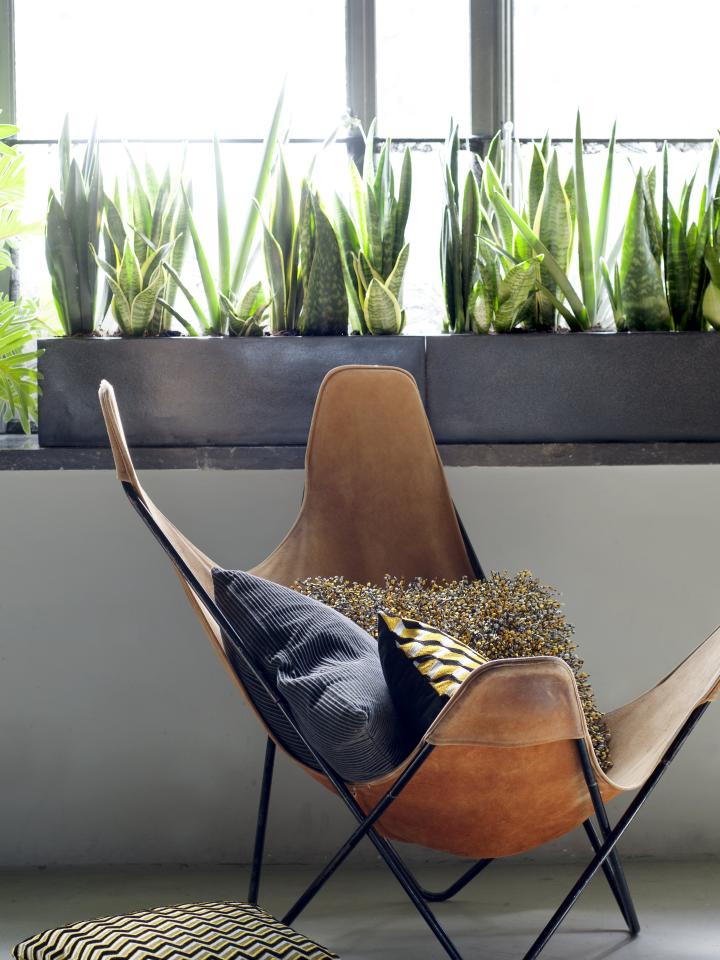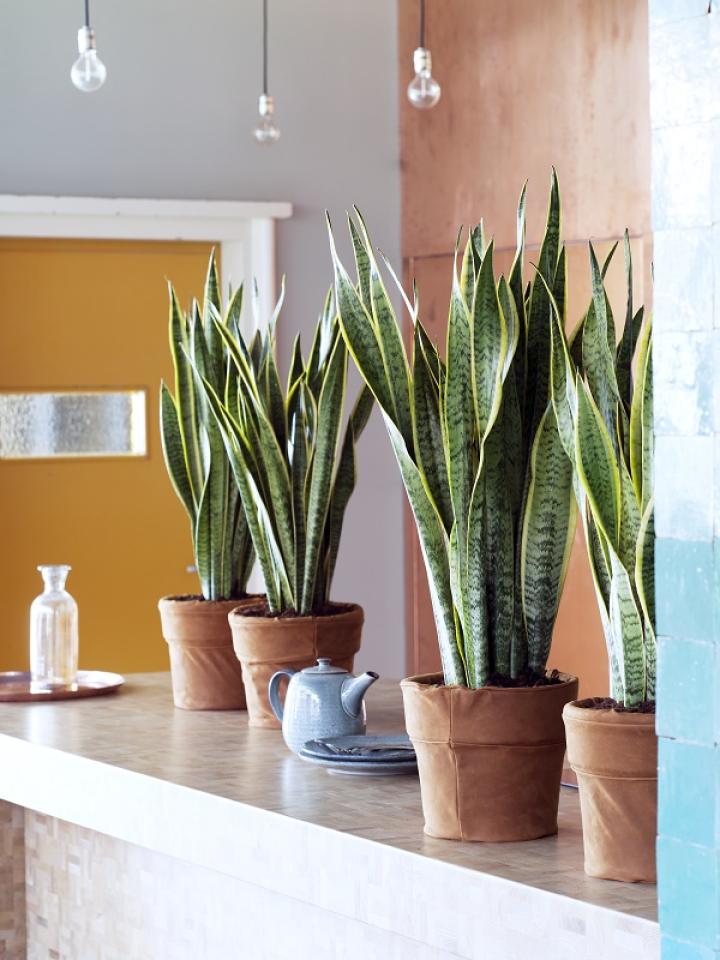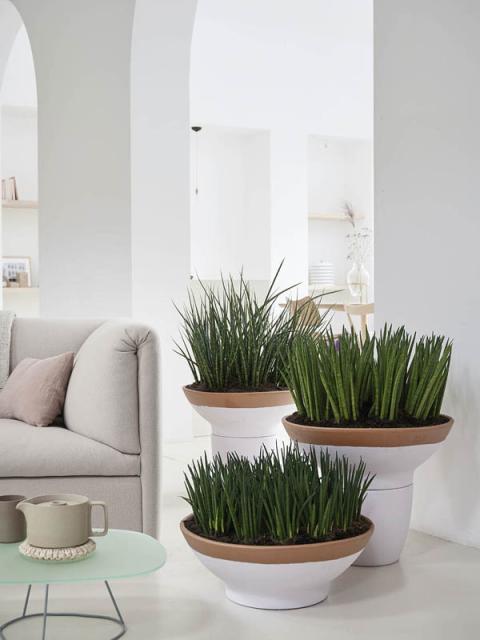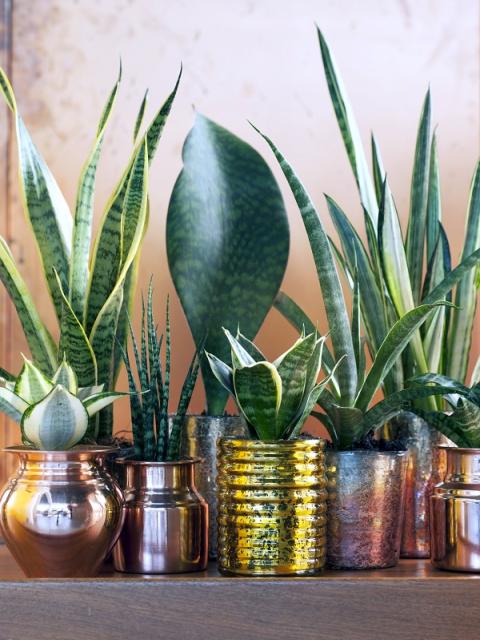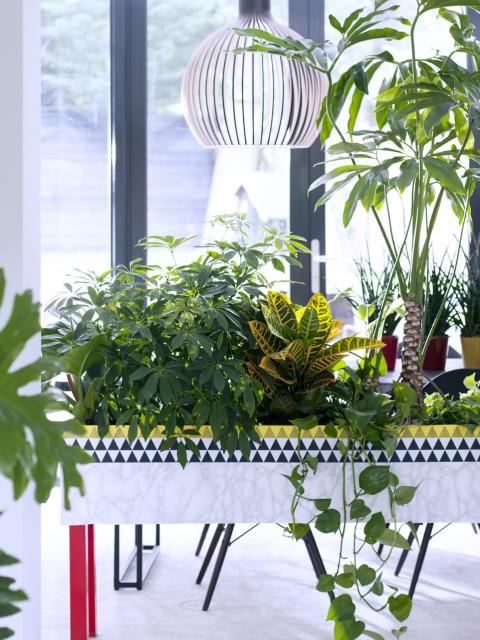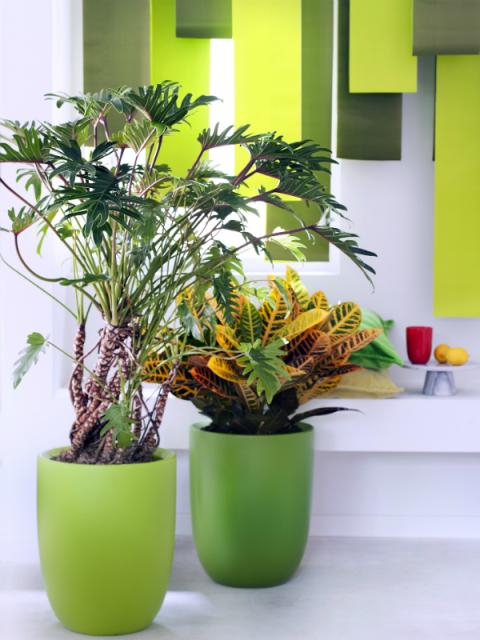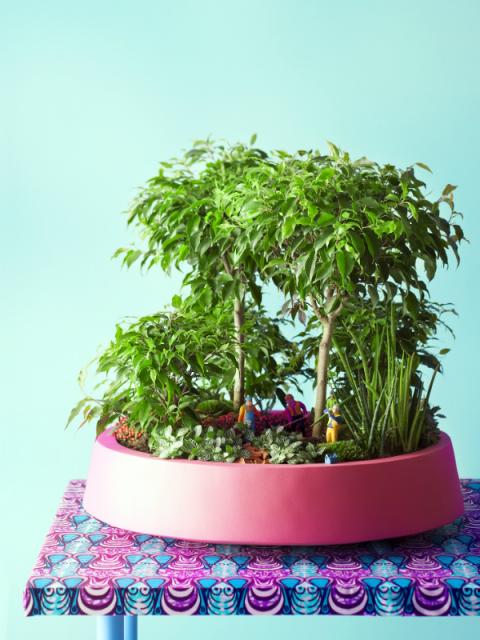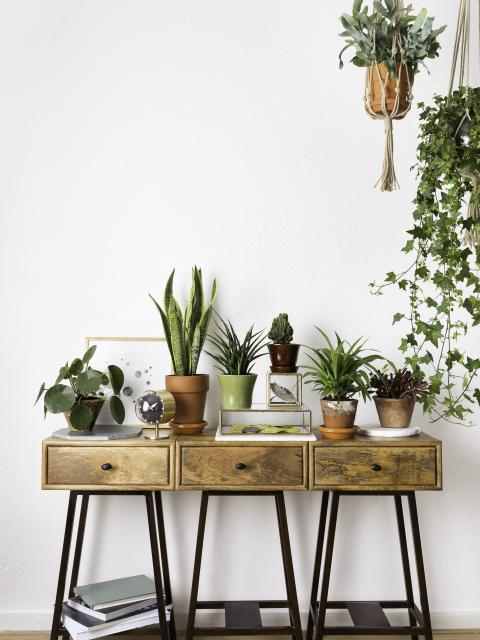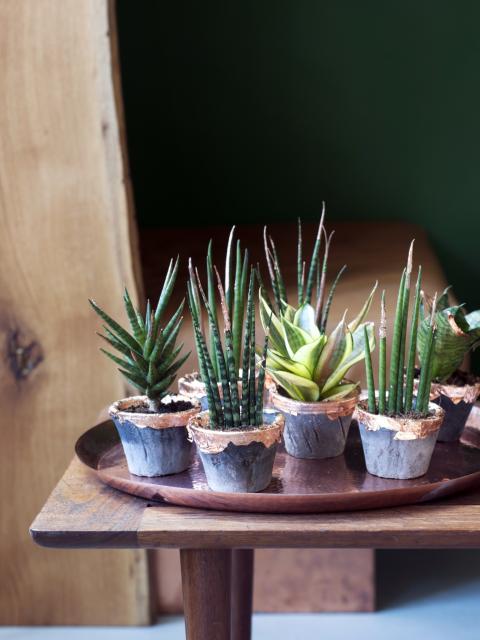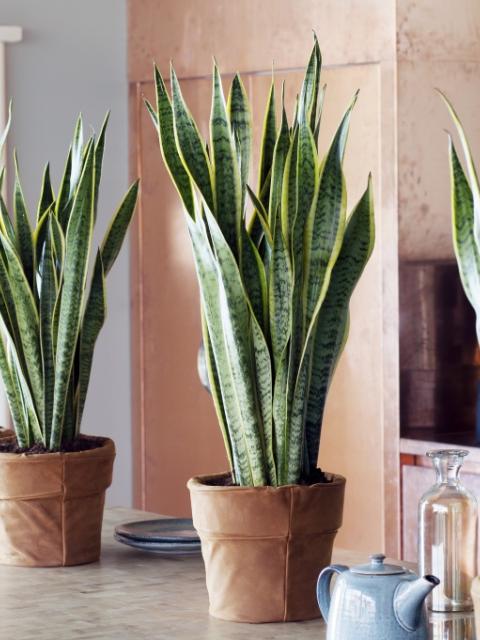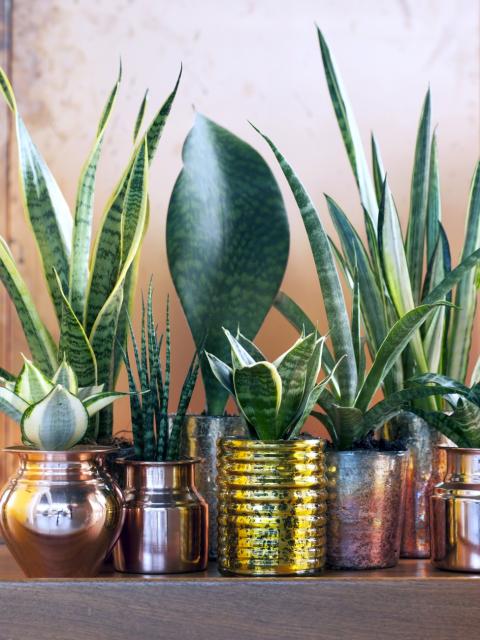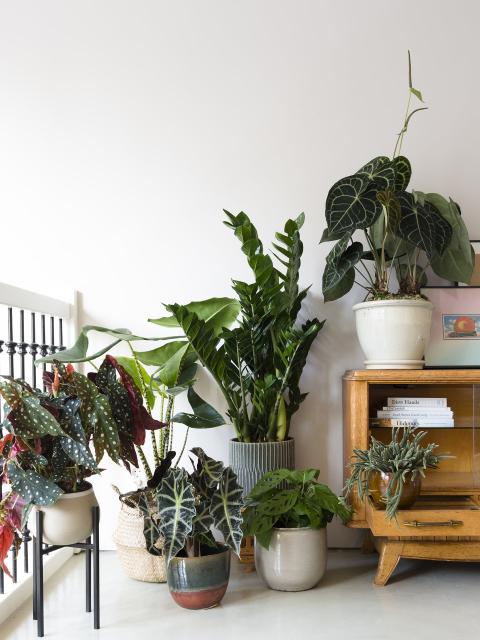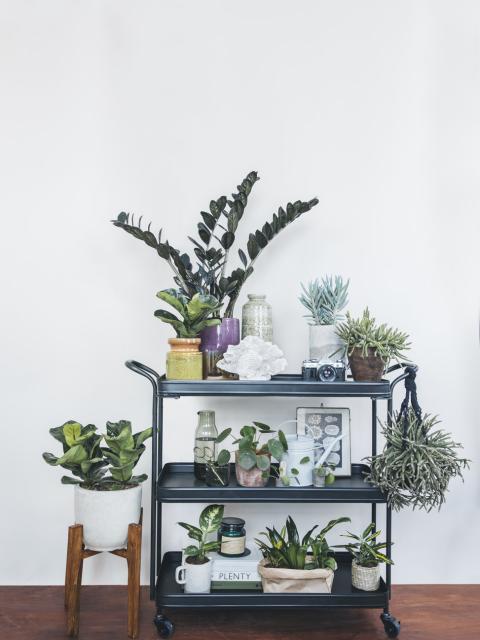Snake Plant: species and growing characteristics
Snake Plant belongs to the Dracaena plant family, part of the asparagus family (Asparagaceae), which also includes plants such as Asparagus fern, Agave and Yucca. Snake Plant can be recognised by its sturdy leaves that grow upright from the earth, often not taller than a metre high. The leaves can be grey-green, various shades of green and/or yellow in colour.
Snake Plant is a typical desert plant, requiring little water to survive. In fact, the plant stores water in its fleshy leaves. This plant is highly flexible when it comes to light requirements, thriving in a bright spot but also in a shady one. Would you like your plant to take on a slightly darker colour? Then move it further away from the window. Would you like its leaves to be a bit lighter in shade? Then place your plant closer to the window.
Snake Plant species
Around 70 different species of Snake Plant are known worldwide. Here are the best-known species commonly kept as houseplants:
- Sansevieria trifasciata: this is the most well-known species, known as Snake Plant.
- There are many cultivars of this species, such as Sansevieria trifasciata ‘Hahnii’ (a compact species that grows only 20cm tall) and Sansevieria trifasciata ‘Laurentii’ (the most common species with grey-green leaves and pale yellow leaf margins).
- Sansevieria cylindrica: this species has cylindrical leaves (upright leaves with a round shape).
- Sansevieria zeylanica: this species has narrow, dark green leaves with a pattern of light green lines or spots. This makes it a decorative species.
- Sansevieria masoniana: this species has very broad leaves that often grow in an oval or heart shape. This species is sometimes called ‘whale fin’ because of the size and shape of its leaves.
- Sansevieria kirkii: this species has broader, often speckled leaves. The rectilinear leaves grow in a rosette shape.
- Sansevieria pinguicula: this is a rarer species that often has thicker, fleshy leaves. This makes this Sansevieria look a bit like a succulent.
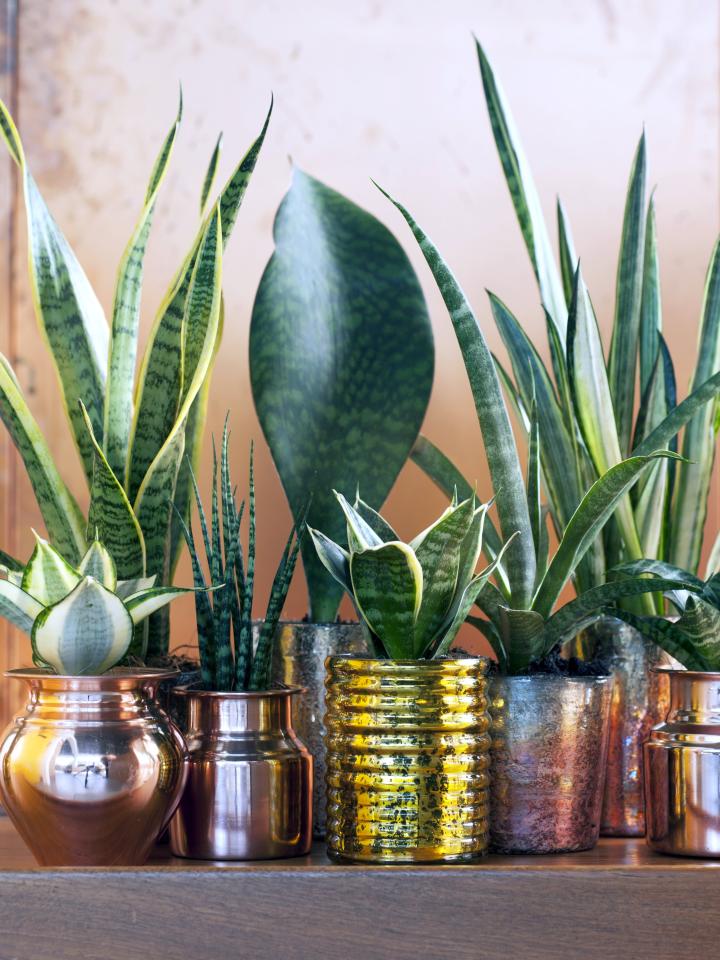
Snake Plant: caretaking and location needs
If you're the proud owner of a new Snake Plant, it's time to discover how to best take care of it. Although this plant is almost impossible to kill and is among the 10 easiest houseplants to care for, we still have a few tips to take care of this desert plant in the best possible way:
- Give Snake Plant little water and let the soil dry well between waterings. In summer, once every fortnight and in winter, the frequency can be even lower (e.g. once every six weeks).
- A Snake Plant would rather get too little water than too much! Overwatering is pretty much the only way to kill this plant. if its leaves are hanging limply, this could be a sign of too much water. If this is the case, repot your plant to another pot with new potting soil.
- Dry air and drought are not a problem for a Snake Plant. They can withstand the air from a heater just fine, and you don't need to mist the plant with a plant sprayer.
- Snake Plant thrives in a sunny position (no direct sunlight), as well as in the semi-shade. The lighter the spot in which the plant stands, the lighter the leaves will become.
- A Snake Plant can grow quickly. Make sure its pot is big enough, and repot it in time.
- You can give Snake Plant some houseplant food once a month during the growing season (spring and summer).
Snake Plant problems
Snake Plants are, in general, very easy to care for. If you notice yellow, wrinkled or fallen leaves, however, Then you may need to change something about your caretaking techniques.
- Snake Plant leaves falling over: Are the leaves falling to the side or no longer standing firmly upright? This could have several causes. You may have given the plant too much or too little water (check the potting soil), or the plant is not getting enough light (change its position). Sometimes older leaves can also fall naturally.
- Snake Plant with yellow leaves: does your plant have yellow leaves? That could mean it is getting too much water. Let the potting soil dry out well before re-watering.
- Snake Plant with wrinkled leaves: wrinkled leaves means the plant isn't getting enough water. Water the plant more often (but not too much!) to solve this problem.
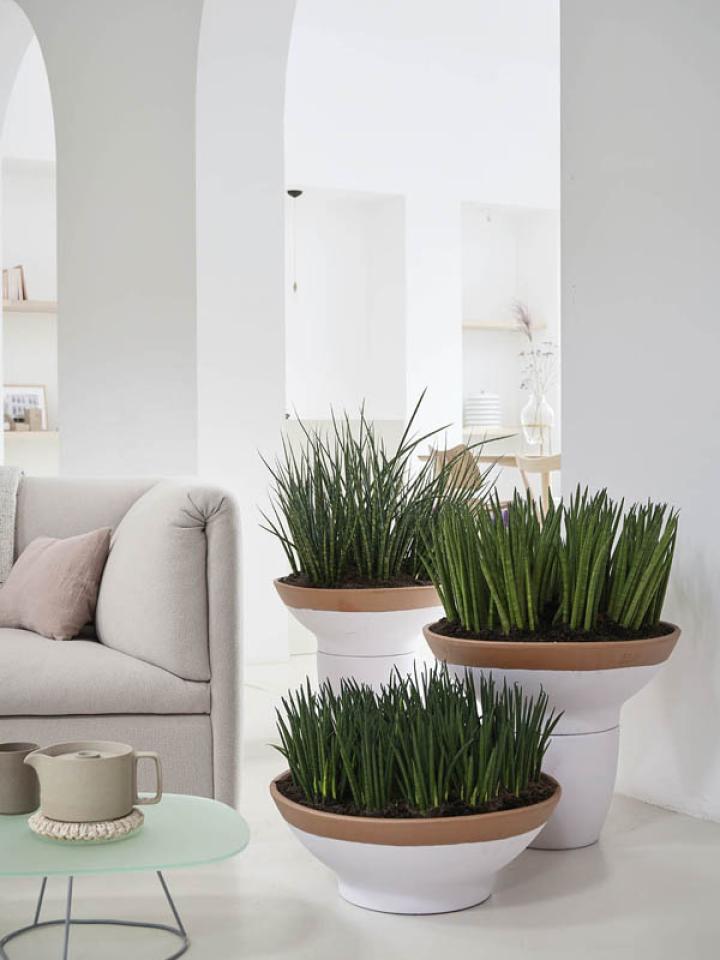
Does Snake Plant purify the air?
Yes, Snake Plant is known for its air-purifying properties. This makes the plant highly suitable for placing in your living room, office, bedroom, bathroom and in enclosed areas. Snake Plant is able to filter harmful substances such as formaldehyde and benzene from the air and convert them into harmless compounds.
Snake Plant is one of the few plants that produces oxygen at night. Instead of absorbing CO2 during the day and converting it into oxygen, this beauty does so at night. This makes it ideal for the bedroom, as the plant oxygenates the air while you sleep. Its low-maintenance nature also makes it the perfect bedroom plant!
Is Snake Plant a succulent?
No, Snake Plant is not a succulent. It does have some similar properties, such as storing water in its leaves, needing little water and withstanding drought well. It belongs to a different plant family from succulents (Asparagaceae) and thus has a different botanical classification.
How to take Snake Plant cuttings
Want to take cuttings or propagate a Snake Plant? This can be done in several ways, but the easiest is by partial cutting (tearing). Check out the step-by-step plan below for taking Snake Plant cuttings:
- Carefully remove the mother plant from the pot. Wipe away as much soil as possible so you can see the roots clearly.
- Look for natural divisions of the root ball. These can often be recognised by separate clusters of stems and roots.
- Carefully twist off some of the roots from the plant (or carefully cut them off with a clean knife).
- Plant the cutting in a pot with potting soil.
- Give the cutting a little water (not too much!) and put it in a bright spot (not in direct sunlight).
- Put the mother plant back in the pot and add some fresh potting soil if necessary.
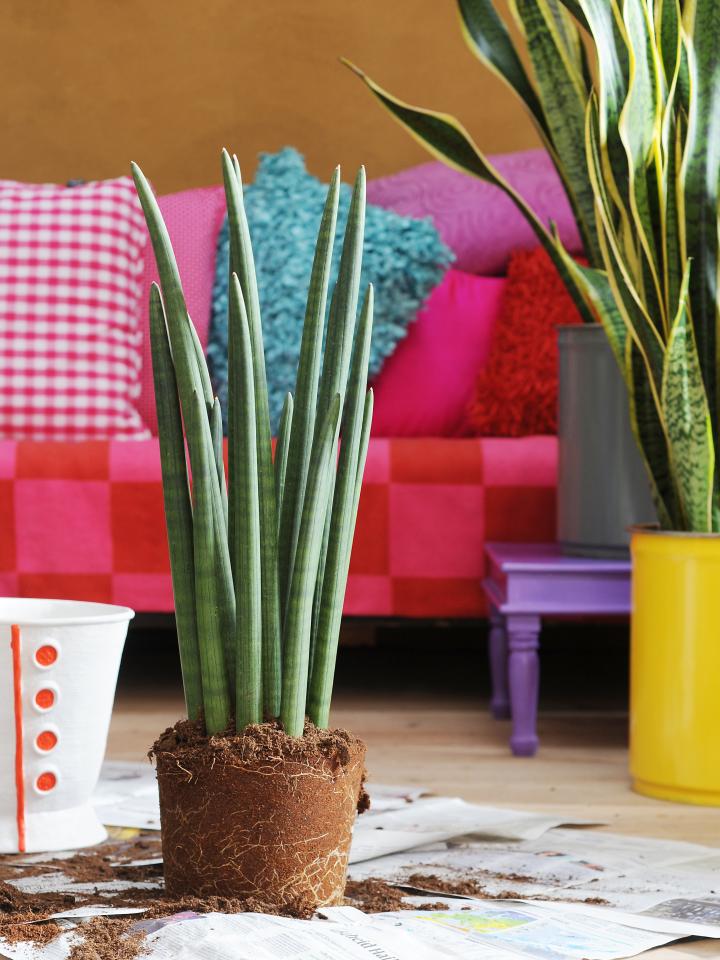
Is Snake Plant poisonous?
Snake Plant is mildly toxic to humans and animals, including dogs and cats. If the plant is bitten, symptoms will be limited to abdominal pain, stomach upset and swelling around the mouth. Prevention is of course better than cure, so keep the plant away from children and pets. If you're wondering which green friends are safe for your furry friends and little ones, check out this article.
Snake Plant symbolism
Snake Plant has different symbolic meanings, but is generally associated with protection, positive energy, health and resilience.
- Protection: in many cultures, Snake Plant is seen as a protective plant that can ward off negative energy and bad influences from a home. The plant owes this to its strong leaves and air-purifying powers.
- Positive energy: the strong, sturdy growth of Snake Plant makes the plant a symbol of positive things such as growth and success. Also, according to Feng-Shui traditions, this plant can be placed in certain ones to attract positive energy.
- Health: as a strong air purifier, Snake Plant is seen as a symbol of health.
Snake Plant origins
The Snake Plant is native to West Africa, Central Africa and parts of Asia. The plant grows naturally in dry, rocky, desert-like areas and grasslands. The plant adapted to drought by storing water in its fleshy leaves. In 1794, Snake Plant was first introduced to Europe by botanist Carl Peter Thunberg. He gave the plant the name Sansevieria in honour of Raimondo di Sangro, an Italian prince from the Italian town of San Severo.
In the 20th century around the 1950s and 1960s, Snake Plant became popular as a house and office plant, due to its stylish appearance and low-maintenance nature. In the early 21st century, many new cultivars of Snake Plant were grown. Since then, it's become impossible to imagine homes and offices worldwide without it.
